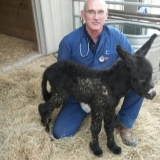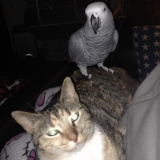Rabies: Is the Risk Real?
What do the movies Old Yeller, To Kill A Mockingbird and The Story of Louis Pasteur have in common? At some point, in all of them, a rabid dog becomes the dramatic part of a scene.
Rabies has terrified mankind for centuries. There is no cure and even with the most advanced medical treatment only 14 people are known to have survived the disease once symptoms have started. Approximately 55,000 to 100,000 people die each year from rabies, mostly in Asia and Africa. In the United States approximately 5,000- 6,000 cases occur every year in animals. Most of these cases are in wildlife, however 6-8% of these occur in domestic animals. Cats are the domestic animal with the highest prevalence of infection.
Hays County has had over 20 laboratory confirmed cases of rabies in 2018. Most of these have been in bats but there was a rabies positive cat diagnosed in San Marcos so the cross over from wildlife to domestic animals has occurred here. Of all animals tested for rabies in Texas about 6% are positive for the disease. The cases are a mix of bats, wildlife, livestock (including horses) and domestic pets (dogs and cats).
Transmission is almost always from the bite of an infected animal. Non-bite transmission is possible but rare.
Rabies vaccination is the cornerstone of prevention. Rabies vaccination is such an important part of animal health (and exposure prevention for human health) that the law dictates it may only be given by a licensed veterinarian. It must be given by the veterinarian, it cannot be sold to a client to then give to their animals. It must be given at appropriate ages and appropriate intervals for the vaccine to have a full protective effect.
An un-vaccinated animal is at risk for infections and therefore is treated as such. If such an animal bites a person the animal must, for the sake of public health, be quarantined for 10 days. At the end of 10 days if the animal is still healthy, all is well, although the owner is responsible for the costs of the quarantine and the animal had to spend 10 days in quarantine.
There is one reliable test for rabies. It can only be done on an animal that is no longer alive. Un-vaccinated animals are at higher risk for euthansia if they bite someone.
Take the time to get all your animals current on their rabies vaccination. In this case, an ounce of prevention is the only thing we have. There is no pound of cure.














